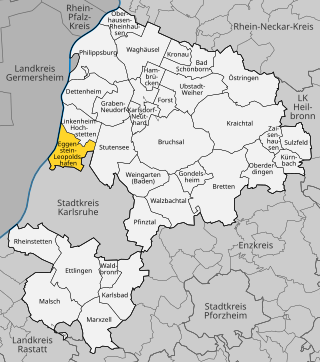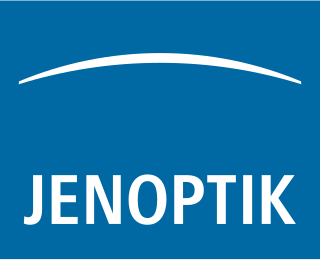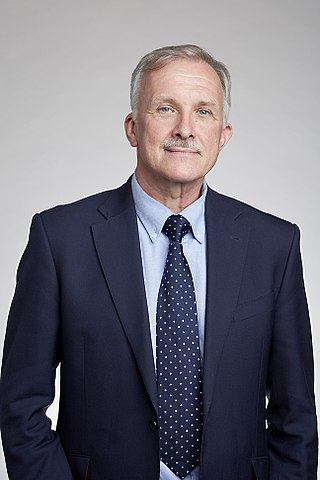The Fraunhofer Society is a German research organization with 76 institutes spread throughout Germany, each focusing on different fields of applied science. With some 29,000 employees, mainly scientists and engineers, and with an annual research budget of about €2.8 billion, it is the biggest organization for applied research and development services in Europe.
The University of Stuttgart is a leading research university located in Stuttgart, Germany. It was founded in 1829 and is organized into 10 faculties. It is one of the oldest technical universities in Germany with highly ranked programs in civil, mechanical, industrial and electrical engineering, among others. It is a member of TU9, an incorporated society of the largest and most notable German institutes of technology. The university is especially known for its reputation in the fields of advanced automotive engineering, efficient industrial and automated manufacturing, process engineering, aerospace engineering and activity-based costing.

Eggenstein-Leopoldshafen is a municipality of almost 17,000 inhabitants located in the federal state of Baden-Württemberg in the Federal Republic of Germany. It lies about 12 km north of Karlsruhe and is the site of the northern campus of the research centre Karlsruhe Institute of Technology (with the former Forschungsreaktor 2. In the west, Eggenstein-Leopoldshafen borders on the Rhine River and in the east it is connected with the Bundesstraße 36.

The Gottfried Wilhelm Leibniz Prize, or Leibniz Prize, is awarded by the German Research Foundation to "exceptional scientists and academics for their outstanding achievements in the field of research". Since 1986, up to ten prizes have been awarded annually to individuals or research groups working at a research institution in Germany or at a German research institution abroad. It is considered the most important research award in Germany.

Jenoptik AG is a Jena, Germany-based integrated photonics company. The company is listed on the Frankfurt Stock Exchange and is included in the TecDAX stock index.
The Fraunhofer Institute for Applied Optics and Precision Engineering (IOF), also referred to as the Fraunhofer IOF, is an institute of the Fraunhofer Society for the Advancement of Applied Research (FHG). The institute is based in Jena. Its activities are attributed to applied research and development in the branch of natural sciences in the field of optics and precision engineering. The institute was founded in 1992.
The Berthold Leibinger Zukunftspreis is an international award for excellent research on the application or generation of laser light. Since 2006 it is biennially awarded by the German non-profit foundation Berthold Leibinger Stiftung with an amount of 50,000 euros, not earmarked.

Berthold Leibinger was a German mechanical engineer, businessman, and philanthropist. He was the head of the German company Trumpf, a leader in laser technology, and founder of the non-profit foundation Berthold Leibinger Stiftung. He served on the advisory board of major companies and was awarded an honorary doctorate by the University of Stuttgart.

The Ferdinand-Braun-Institut, Leibniz-Institut für Höchstfrequenztechnik (FBH) is a research institute, which is a member of the Gottfried Wilhelm Leibniz Scientific Community. The institute is located in Berlin at the Wissenschafts- und Wirtschaftsstandort Adlershof (WISTA), its research activity is applied science in the fields of III-V electronics, photonics, integrated quantum technology and III-V technology

Silicon Saxony is a registered industry association of nearly 300 companies in the microelectronics and related sectors in Saxony, Germany, with around 40,000 employees. Many, but not all, of those firms are situated in the north of Dresden.
Erich P. Ippen is a principal investigator in the Research Laboratory of Electronics (RLE) at the Massachusetts Institute of Technology (MIT). He holds appointments as the Elihu Thomson Professor of Electrical Engineering Emeritus and Professor of Physics Emeritus. He is one of the leaders of RLE’s Optics and Quantum Electronics Group.

The Beutenberg Campus is a science and research site situated in southern Jena, Germany. The physician Hans Knöll founded the first biomedical research institute at Beutenberg in 1950. From 1970, it was run as the Central Institute of Microbiology and Experimental Therapy of the Academy of Sciences of the GDR. From 1982 institutes focussing on physics were also set up on the site. Following German reunification in 1990, a multidisciplinary science and research centre was created in response to a recommendation by the German Council of Science and Humanities.

The TRUMPF Group is a German industrial machine manufacturing company. It is a family-owned company with its head office in Ditzingen near Stuttgart. TRUMPF is one of the world's biggest providers of machine tools. With more than 70 operative subsidiaries, the TRUMPF Group is represented in all important markets worldwide. Its production facilities are based in China, Germany, France, the UK, Italy, Japan, Mexico, Austria, Poland, Switzerland, the Czech Republic and the US.

Nicola Leibinger-Kammüller born Leibinger is an American-born German businesswoman. She is the president and chairwoman of the Managing Board of the Trumpf GmbH + Co. KG, of which she has been a member since 2003, after having joined the company in 1985 as a public relations and branding specialist.

(James) Roy TaylorFREng is Professor of Ultrafast Physics and Technology at Imperial College London.
In materials science, direct laser interference patterning (DLIP) is a laser-based technology that uses the physical principle of interference of high-intensity coherent laser beams to produce functional periodic microstructures. In order to obtain interference, the beam is divided by a beam splitter, special prisms, or other elements. The beams are then folded together to form an interference pattern. Sufficiently high power of the laser beam can thus result in the removal of material at the interference maximums thanks to ablation phenomenon, leaving the material intact at the minimums. In this way, a repeatable pattern can be permanently fixed on the surface of a given material. DLIP can be applied to almost any material and can change the properties of surfaces in many technological areas with regard to electrical and optical properties, tribology (friction and wear), light absorption and wettability (e.g., which can be related to hygienic properties).

Jürgen W. Czarske is a German electrical engineer and a measurement system technician. He is the director of the TU Dresden Biomedical Computational Laser Systems competence center and a co-opted professor of physics.
Boris Nikolaevich Chichkov, born 1955 in Novokuznetsk is a German-Russian Physicist whose research focus is on the development of novel laser technologies and their applications in material processing, photonics, and biomedicine.
Georg von Freymann is a German experimental physicist and professor of physics at the Technical University of Kaiserslautern and head of the "Optical Technologies and Photonics" research group there.
Andrés Fabián Lasagni is an Argentinean, Italian and German materials scientist and laser expert. He is professor at the Technische Universität Dresden and leads the Chair for Laser-based Manufacturing.











